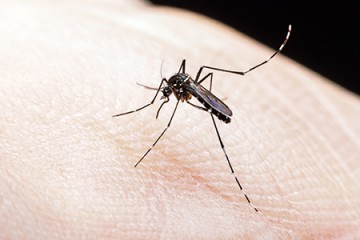In 1774, a 24-year-old writer in Germany published his first novel, which unfolded as a series of letters chronicling the unrequited love of a sensitive and passionate artist named Werther, who eventually took his own life.
By the following year, The Sorrows of Young Werther had catapulted author Johann Wolfgang von Goethe to international celebrity. The book was translated into multiple languages; young men began dressing in the style of Werther—blue jackets and yellow trousers; and an industry of fan merchandising had sprung up, with a line of fine china dedicated to the book, and even a cologne named after the doomed character.
There was also a spate of copycat suicides.
In fact, so many deaths were linked to Young Werther that the city of Leipzig outlawed the Werther style of dress and banned the book itself until 1825.
This chain of events—dubbed the Werther effect—remains among the most publicized historical examples of what the Centers for Disease Control and Prevention call suicide contagion: the phenomenon by which exposure to reports of suicides or suicidal behaviors influences others to commit or attempt suicide.
Now, the popularity of a new show, 13 Reasons Why, released by Netflix on March 31, has some mental health professionals worried about a modern-day Werther effect. Based on the best-selling young adult novel by Jay Asher, the 13-episode series follows a teenager named Clay as he untangles the complex and intertwined relationships and events that led to the suicide of his friend and crush, Hannah.
To determine whether there was in fact a Werther effect in the U.S. following the release of the show—and if so, to then quantify that effect—Johns Hopkins computer scientist Mark Dredze and his team analyzed Internet search activity relating to suicide after the show debuted.
"We have decades of research that tells us that if you show someone's suicide, it leads to increased suicide," says Dredze, an associate professor in the JHU's Department of Computer Science. "Still, there was a debate back and forth about whether the show was having a positive influence or negative influence—that's where our research steps in."
For the study, which was led by public health researcher John Ayers of San Diego State University, the team analyzed data supplied by Google Trends to examine how often search terms relating to suicide were entered into Google in the 19 days following the release of 13 Reasons Why. The team members limited their data to a 19-day period because a high-profile suicide took place on April 19 and could have influenced search behavior. They compared the actual search volume to expected volume, which they estimated using data collected before the series was released.
Their findings fell in line with their predictions.
Following the release of 13 Reasons Why, searches for the term "teen suicide" soared 34 percent compared to expected search volume. Searches for "how to commit suicide" rose 26 percent, "commit suicide" rose 18 percent, and "how to kill yourself" rose 9 percent. Queries relating to suicide prevention also increased. The search term "suicide hotline number" rose 21 percent, "suicide hotline" rose 12 percent, and "suicide prevention" rose 23 percent.

Overall, the team found between 900,000 and 1.5 million more searches relating to suicide than would have been expected if the show hadn't been released.
The findings, the researchers say, indicate not only an increase in curiosity about suicide, but also an increased awareness of suicide prevention resources. What's more, adds Dredze, is that studies have found that increased online searching for suicide-related terms is correlated with increased suicide rates. According to the CDC, suicide is the second-leading cause of death in the U.S. among people ages 10 to 34.
Despite the limitations of the study—which did not examine the age or gender of the users, and does not indicate whether any of the suicide-related search queries resulted in a suicide attempt—Dredze says the findings indicate a trend in activity likely influenced by the series, further fueling criticisms of the show and the way it was released.
Annette Erlangsen, an associate adjunct professor in the Johns Hopkins Bloomberg School of Public Health and an expert in suicide prevention, says the Werther effect of suicide contagion should not be underestimated—and suggests that in the Internet age, it is possible for the effect to spread internationally. Erlangsen, who is based in Denmark, adds that nearly all of the adolescents she has spoken with in recent months have watched the show.
Also see
"It's important to report on suicide in a sensitive and responsible way because we know that if it's reported irresponsibly, it will lead to copycat behavior, especially by persons of the same gender and the same age group," says Erlangsen, who is a program leader at the Danish Research Institute for Suicide Prevention. "That's why 13 Reasons Why caused a lot of stir in the circles that I work in. We are very upset with the way Netflix has portrayed suicide in this series."
The World Health Organization has offered guidelines on responsible reporting and depiction of suicide in the media, which the series deviated from in myriad ways. For example, WHO recommends not publishing a suicide note. Yet the show's premise is one long suicide note, which takes the form of a series of cassette tapes sent from Hannah to Clay. WHO also discourages showing the methods of suicide, or depicting the act itself—which 13 Reasons Why flouts in the final episode of the series in a minute-long, graphic montage of Hannah's death.
In response to public outcry, the show's producers increased the number of warnings that appear before episodes containing graphic violence, and they launched a website, 13ReasonsWhy.info, that contains suicide prevention resources. These precautions were added May 1, a month after the show was initially released.
"It was a bit of a scandal when Netflix first released the show, because they asked experts from the field of suicide prevention whether it would be advisable to go ahead with the series, and they clearly told the producers it is not OK, and they still decided to go ahead with it," says Erlangsen, who was not a part of Dredze's Internet search term study.
"I do not see anything positive in Netflix's use of suicide—they just use it as a dramatic effect," she adds.
Although more information is needed before a determination can be made about the correlation between the show and suicide rates, Dredze, who has studied pop culture's effects on Internet behavior for several years, says this type of analysis of online behaviors could help fill in a gap where traditional public health research leaves off.
"If you wanted to look at the suicide rates in the U.S. in the wake of this show, it would take months, if not years to collect that data," he says. "One of the powerful aspects of web data is that we can get it right away, and that means we can do a paper on season one of 13 Reasons Why before they start producing season two."
He says that people will tell a search bar in Google things they might never admit to their physician or therapist—providing insights that could improve public health practices and keep people safer in the long run.
As for the show's producers, who include pop star Selena Gomez, the question remains whether they will incorporate the mental health guidance during the production of season two. However, it is unlikely they didn't anticipate the furor their series could provoke—in episode eight, Hannah approaches a disaffected young man at a college fair who is idly paging through a book: The Sorrows of Young Werther.
We can all help prevent suicide. The National Suicide Prevention Lifeline provides 24/7, free, and confidential support for people in distress, prevention and crisis resources for you or your loved ones, and best practices for professionals. If you or someone you know needs help, call 1-800-273-TALK (1-800-273-8255).
Posted in Health, Science+Technology, Politics+Society
Tagged mental health, mark dredze, suicide, suicide prevention











